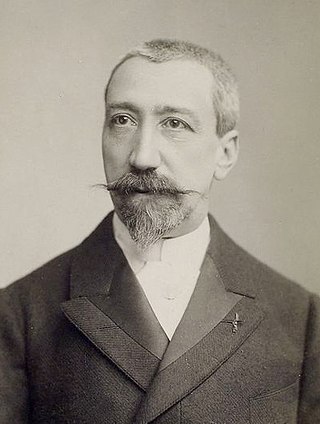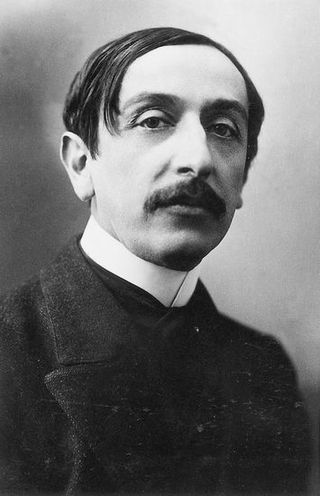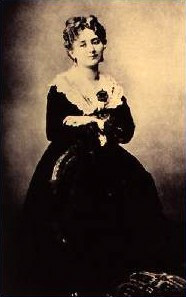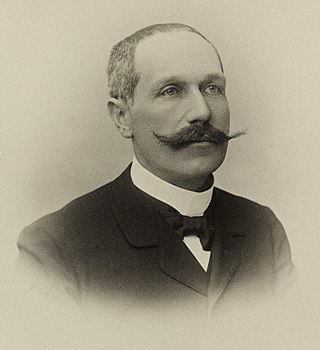
Anatole France was a French poet, journalist, and novelist with several best-sellers. Ironic and skeptical, he was considered in his day the ideal French man of letters. He was a member of the Académie Française, and won the 1921 Nobel Prize in Literature "in recognition of his brilliant literary achievements, characterized as they are by a nobility of style, a profound human sympathy, grace, and a true Gallic temperament".

Georges Benjamin Clemenceau was a French statesman who served as Prime Minister of France from 1906 to 1909 and again from 1917 until 1920. A physician turned journalist, he played a central role in the politics of the Third Republic, particularly amid the end of the First World War. He was a key figure of the Independent Radicals, advocating for the separation of church and state, as well as the amnesty of the Communards exiled to New Caledonia.

The Dreyfus affair was a political scandal that divided the Third French Republic from 1894 until its resolution in 1906. The scandal began in December 1894 when Captain Alfred Dreyfus, a 35-year-old Alsatian French artillery officer of Jewish descent, was convicted of treason for communicating French military secrets to the German Embassy in Paris. He was sentenced to life imprisonment and sent overseas to the penal colony on Devil's Island in French Guiana, where he spent the following five years imprisoned in very harsh conditions.

Auguste-Maurice Barrès was a French novelist, journalist, philosopher, and politician. Spending some time in Italy, he became a figure in French literature with the release of his work The Cult of the Self in 1888. In politics, he was first elected to the Chamber of Deputies in 1889 as a Boulangist and would play a prominent political role for the rest of his life.

The Armenian Revolutionary Federation, also known as Dashnaktsutyun, is an Armenian nationalist and socialist political party founded in 1890 in Tiflis, Russian Empire by Christapor Mikaelian, Stepan Zorian, and Simon Zavarian. As of 2023, the party operates in Armenia, Lebanon, Iran and in countries where the Armenian diaspora is present. The party was also active in Artsakh until the Azerbaijani offensive in September 2023. Although it has long been the most influential political party in the Armenian diaspora, it has a comparatively smaller proportional presence in modern-day Armenia. As of October 2023, the party was represented in two national parliaments, with ten seats in the National Assembly of Armenia and three seats in the Parliament of Lebanon as part of the March 8 Alliance.

La Dépêche, formally La Dépêche du Midi, is a regional daily newspaper published in Toulouse in Southwestern France with seventeen editions for different areas of the Midi-Pyrénées region. The main local editions are for Toulouse, Ariège, Aude, Aveyron, Haute-Garonne, Gers, Lot, Lot-et-Garonne, Hautes-Pyrénées, Tarn and Tarn-et-Garonne.

Bernard Lazare was a French literary critic, political journalist, polemicist, and anarchist. He is known as the first Dreyfusard.

Christapor Mikaelian was an Armenian revolutionary who played a leading role in the Armenian national liberation movement.

Lucien Herr was a French intellectual, librarian at the École Normale Supérieure in Paris, and mentor to a number of well-known socialist politicians and writers, including Jean Jaurès and Charles Péguy. He was a leading strategist in the Dreyfusard cause.

The Moderates or Moderate Republicans, pejoratively labeled Opportunist Republicans, was a French political group active in the late 19th century during the Third French Republic. The leaders of the group included Adolphe Thiers, Jules Ferry, Jules Grévy, Henri Wallon and René Waldeck-Rousseau.

Léontine Lippmann, better known by her married name of Madame Arman or Madame Arman de Caillavet, was the muse of Anatole France and the hostess of a highly fashionable literary salon during the French Third Republic. Madame Verdurin in Proust's Remembrance of Things Past was modelled on Lippmann.

Émile Pouget was a French journalist, anarchist pamphleteer and trade unionist, known for his pivotal role in the development of revolutionary syndicalism in France. His iconic newspaper, Le Père Peinard, stood out from previous anarchist publications with its inventive use of vernacular and urban slang. Notably, Pouget introduced the term "sabotage" as a tactical approach, a concept later adopted by the General Confederation of Labour (CGT) at its Toulouse Congress in 1897. Pouget's combination of anarchist political theory and revolutionary syndicalist tactics has led several authors to identify him as an early anarcho-syndicalist.

Pierre-Barthélemy Gheusi, also known by the pseudonym Norbert Lorédan, was a French theatre director, librettist, journalist and writer. He was born in Toulouse and died in Paris.

Auguste Marie Joseph Jean Léon Jaurès, commonly referred to as Jean Jaurès, was a French Socialist leader. Initially a Moderate Republican, he later became one of the first social democrats and the leader of the French Socialist Party, which opposed Jules Guesde's revolutionary Socialist Party of France. The two parties merged in 1905 in the French Section of the Workers' International (SFIO). An antimilitarist, Jaurès was assassinated in 1914 at the outbreak of World War I, but remains one of the main historical figures of the French Left. As a heterodox Marxist, Jaurès rejected the concept of the dictatorship of the proletariat and tried to conciliate idealism and materialism, individualism and collectivism, democracy and class struggle, patriotism and internationalism.

Mathieu Dreyfus was an Alsatian Jewish industrialist and the older brother of Alfred Dreyfus, a French military officer falsely convicted of treason in what became known as the Dreyfus affair. Mathieu was one of his brother's most loyal supporters throughout the affair.

Louis Émile Cottin was a French militant anarchist who is best known for the attempted assassination of Georges Clemenceau.

Edward Joris (1876–1957) was a Belgian Flemish anarchist who was involved in the 1905 bombing in Constantinople known as the Yıldız assassination attempt, which was directed against the Sultan Abdul Hamid II as a retribution for the Hamidian massacres.

Pro Armenia (1900–1914) was a French-language fortnightly that took pro-Armenian positions. The goal of the journal was to raise awareness in Europe about the plight of Armenians in the Ottoman Empire. It was founded at the initiative of Christapor Mikaelian, a co-founder of the Armenian Revolutionary Federation, enlisting the help of a number of prominent Dreyfusard and leftist intellectuals. Pierre Quillard was its editor-in-chief and Jean Longuet was its secretary. The members of its editorial committee were Georges Clemenceau, Anatole France, Jean Jaurès, Francis de Pressensé, and Edmond de Roberty. It temporarily ceased publication after the 1908 Ottoman constitutional revolution. It was published again in 1912 and 1913 under the title Pour les Peuples d’Orient. In 1914, the last year that the journal was published, it resumed its original name.
Jean-Michel Rosenfeld was a French Holocaust survivor and politician.

The assassination of Jean Jaurès, French deputy for Tarn and Socialist politician, took place on Friday, July 31, 1914, at 9:40 pm, as he dined at the Café du Croissant on rue Montmartre in Paris's 2nd arrondissement, in the heart of the Republic of the Croissant, not far from the headquarters of his newspaper, L'Humanité. He was hit by two gunshots: one bullet pierced his skull and the other nestled in woodwork. The famous politician collapsed, mortally wounded.
























